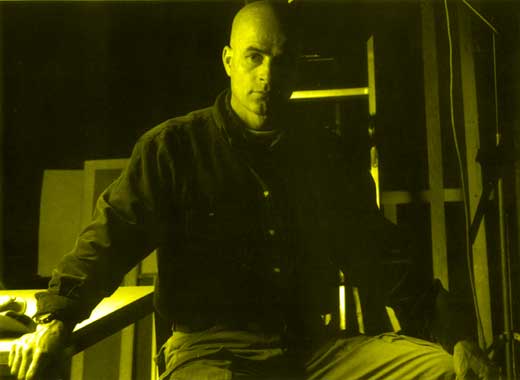| Home |
|

|
Giovanni Muggiasca was born in Lugano, Switzerland, and studied at the University of Geneva.
|
|
His extensive travels in Mexico, Guatemala and the United States between 1972 and 1996 proved to be fundamental for his training as artist.
Muggiasca first exhibited at the Galleria La Perla in Switzerland in 1986. His paintings are oils on canvas with a clear Gauguinian style, in which the strength of the colour blends with a captivating execution of exotic figures. 1988 saw his second one-man show in the same gallery. The artist’s work moved increasingly towards reduction and essentiality. Muggiasca journeyed across Europe in order to study the most important artistic currents of the past and present. Visit to Italy included Assisi, Florence, Siena, Rome and Venice. Since 1994 he has been spending much of the year in Palm Beach, Florida, where he has a studio-residence. Since 2001 part of year Gassin south France and Collina d'Oro Switzerland. |
|
In his large canvasses - which almost serve to make us “see” more, like in primitive paintings the large eye which sees more - Muggiasca sets up extreme uncontaminated sign of this intangible transmigration of the image from one face to the other, from fullness to emptiness, from birth to death. Signal which, having lost their original symbolic function, remain like artifacts from a non-existent present or menhirs suspended in air trusting in their natural power which generates time and place. Indeed, these paintings evoke images which hover on the threshold of colour and form and have plain and “imploded” appearances, crude and expiating; in the viewer they produce a degree of surprisingly new reactivity before this “universe pulsating” between the extremes of the inexpressible due to the absence of the image or because the veiling in a self-sufficient image: the arrow, the cross, the egg, the skull.
|
|
North, South, East, West: not symbols, but milestones of vision which is, fundamentally, a certain degree of contamination with reality, whether this is magic, religious, political or merely pragmatic, in that sense it is the same. The cardinal point destinated to flow together (the egg into the skull, and these into the cross and this into the arrow stretching towards the extreme points of the world), to sustain the passage between what is and what appears, its recognizableness and eloquence.
|
|
(Andrea Beolchi)
|
|
Sign and colour together become an invention that is continual and unavoidable permeation. The forms may be simple but they are done with strokes of complexity that cannot be ascribed to pure geometry.
|
|
Muggiasca’s is an original line, lying somewhere between minimalism and symbolism. “The invention” of abstraction is born in close ties to the sign: they both cancel and complete each other. The symbolic image prompts a reflective process, which intensifies when the form is reduced. This in turn ensures an area of freedom where every element represent itself and the relationship is in the constant equilibrium between all the expressive elements; The analysis extends to the connection between object, context, colour and goes on to build a single linguistic system. All of this happens around the imperceptible, taut meeting line, where confrontation and interaction take place. These crumble in the series of rectangular pictures broken up by a wedge that worked its way into the middle, either to separate them or to bring them closer together. The tangible of the object penetrates the ideal of the picture. This is dialectical ground where the artist exposes himself to experiment and self-experiment; Kandinsky said that our harmony was tones in conflict; lost equilibrium; principles that fall away; unexpected drum beats; big questions; seemingly crazy ambitions; impulse and nostalgia and desire which appear to be torn; chains and destroyed links that join together; opposites and contradictions. There is always duality: tangible-ideal, object-colour, more-less. We have the red split pieces with a wedge of burnt wood inserted there; blue or anthracite canvases, three pictures separated by two interposed objects, or the symbolically pierced egg. Coloured neon is also used for the object with such a forceful material presence in contrast to the lyricism of the painted surface.
|
|
The very dimensions of the space appear elastic with long intervals of comparative darkness and areas of bright elements. Application of this structure implies the sense of scale and an essential iconic interpretation. This is a planned work, a silent, yet active object- communication for a sensibility determined to uncover the whole world.
(Martina Cavallarin) |
| 2004 |
 |


